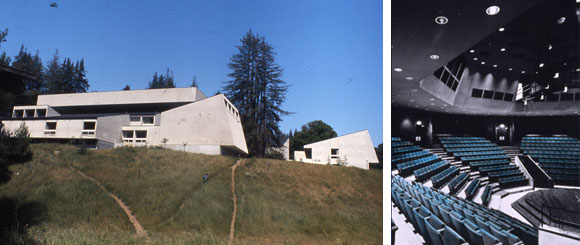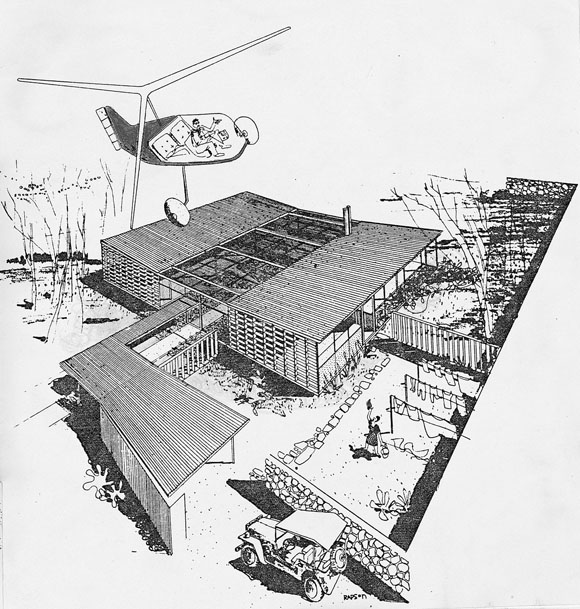
Ralph Rapson, FAIA (1914–2008), wasn’t a California architect. He was a Midwesterner. Yet his kind of clarity led to a humane and flexible modernism that could respond to the West. With just one completed theater complex and one unbuilt house, he left quite a legacy in California.
One of his earliest published projects, Case Study House Number 4 (CSH #4), the “Greenbelt House,” was commissioned in 1945 by John Entenza, the editor of Arts+Architecture. Rapson and Eero Saarinen were the only two non-Californians invited to participate in the program.
In 1989, the Los Angeles Museum of Contemporary Art mounted a retrospective of the Case Study House period entitled “Blueprints for Living” and created a renewed interest in modernism across the globe. The museum took the bold step of constructing Rapson’s house within the exhibit. His Midwest sensibility had resulted in a deceptively simple, 1,800-square-foot house that focused on the courtyard—a historic symbol of California’s outdoor life.

In the innovative educational environment at UC Santa Cruz, his Performing Arts Center celebrates the fresh air and tall redwoods with an outdoor lobby. You are protected from the occasional rain by an oversized canopy that also happens to organize the loose diagram he designed in response to the forested site. Although more recent buildings have crowded the 1971 project a little, the bold forms are still visible through the trees. This important building can be understood as the progeny of his now-demolished landmark Guthrie Theater in Minneapolis. At Santa Cruz, he simplified the form and distributed the functions, but still created a dramatic focus for students and professional performers alike. I remember a folk concert there in the mid-1970s, not long after the project opened. You walked through the forest to a collage of angled roofs and were suddenly inside an intimate theater that felt like it held a few dozen seats, not 550. We can only hope that UC won’t make the same mistake that Minneapolis did and throw away this great architect’s gift.
Author Kenneth Caldwell is a communication consultant and writer based in Oakland, California.
Originally published 3rd quarter 2008, in arcCA 08.3, “Engineering + Architecture.”





